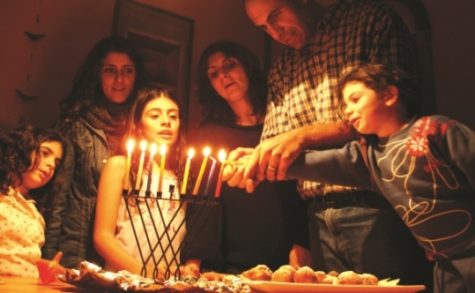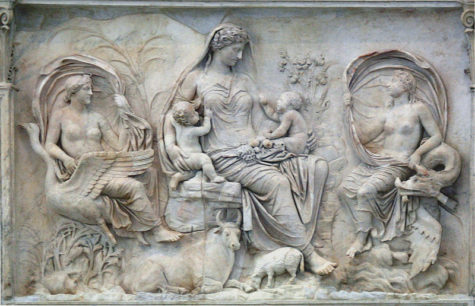Daily Archives: December 13, 2015
Hanukkah (Hanukah / Hanuka / Chanukah) is a festival of lights that is symbolized by the candelabrum known as a menorah. Hanukkah celebrates a lighting miracle when one night’s worth of oil lit candles for 8 days. Special foods and gift-giving are also a part of Hanukkah.
This eight-day festival of light that begins on the eve of the 25th of the Jewish month of Kislev – celebrates the triumph of light over darkness, of purity over adulteration, of spirituality over materiality.
Here’s the Story:
More than twenty-one centuries ago, the Holy Land was ruled by the Seleucids (Syrian-Greeks), who sought to forcefully Hellenize the people of Israel. Against all odds, a small band of faithful Jews defeated one of the mightiest armies on earth, drove the Greeks from the land, reclaimed the Holy Temple in Jerusalem and rededicated it to the service of God.
When they sought to light the Temple’s menorah (the seven branched candelabrum), they found only a single cruse of olive oil that had escaped contamination by the Greeks; miraculously, the one-day supply burned for eight days, until new oil could be prepared under conditions of ritual purity.
To commemorate and publicize these miracles, the sages instituted the festival of Chanukah. At the heart of the festival is the nightly menorah (candelabrum) lighting: a single flame on the first night, two on the second evening, and so on till the eighth night of Chanukah, when all eight lights are kindled.
On Chanukah, the Hallel and Al HaNissim are added in the daily prayers to offer praise and thanksgiving to God for “delivering the strong into the hands of the weak, the many into the hands of the few… the wicked into the hands of the righteous.”
Chanukah Customs Include:
- Eating foods fried in oil – latkes (potato pancakes) and sufganiot (doughnuts)
- Playing with the dreidel – a spinning top on which are inscribed the Hebrew letters nun, gimmel, hei and shin, an acronym for Nes Gadol Hayah Sham, “a great miracle happened there”
- The giving of Chanukah gelt, (gifts of money), to children
On December 13, the anniversary of the Temple of Tellus was celebrated along with a lectisternium (banquet) for Ceres, who embodied “growing power” and the productivity of the earth. This day was known as The Sementivaem, and was the second of two yearly festivals of Tellus Mater, the Roman earth goddess.
Very little is known about how it was celebrated. More is known about the first yearly Festival of Tellus. This festival was celebrated in honour of Tellus on the 15th of April, which was called Fordicidia or Hordicalia. You can read about it here: Fordicia – The Festival of Tellus.
In private life sacrifices were offered to Tellus at the time of sowing and at harvest-time, especially when a member of the family had died without due honors having been paid to him, for it was Tellus that had to receive the departed into her bosom. At the festival of Tellus, and when sacrifices were offered to her, the priests also prayed to a male divinity of the earth, called Tellumo.
When an oath was taken by Tellus, or the gods of the nether world, people stretched their hands downward, just as they turned them upwards in swearing by Jupiter.
About the Temple:
The Temple of Tellus was the most prominent landmark of the Carinae, a fashionable neighborhood on the Oppian Hill. It was near homes belonging to Pompey and to the Cicero family.
The temple was the result of a votum made in 268 BC by Publius Sempronius Sophus when an earthquake struck during a battle with the Picenes. Others say it was built by the Roman people. It occupied the former site of a house belonging to Spurius Cassius, which had been torn down when he was executed in 485 BC for attempting to make himself king. The anniversary (dies natalis) of its dedication was December 13.
A mysterious object called the magmentarium was stored in the temple, which was also known for a representation of Italy on the wall, either a map or an allegory.
A statue of Quintus Cicero, set up by his brother Marcus, was among those that stood on the temple grounds. Cicero claims that the proximity of his property caused some Romans to assume he had a responsibility to help maintain the temple.
Sources Wikipedia and Myth Index





